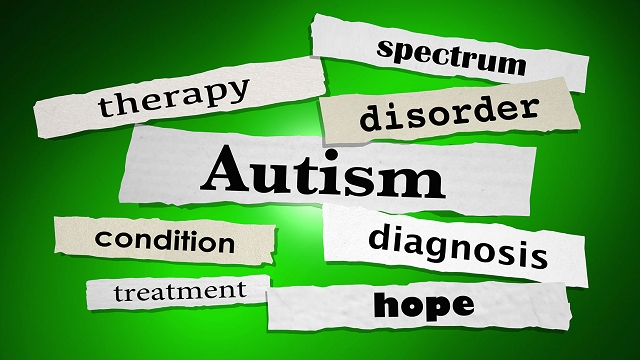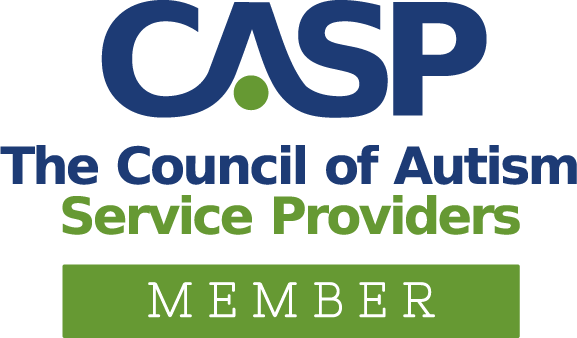The history of autism is a fascinating depiction of how our understanding of science can change lives for the better. Did you know that the history of autism begins as early as 1908? Psychiatrist Eugen Bleuler first used the term to describe a schizophrenic person who had stopped engaging with the world around them. According to Bleuler, they had withdrawn into themselves.
Autism is derived from the Greek word “autos,” which means self. Bleuler selected “autism” to describe a person exhibiting hyper-individualistic behavior: having a limited interest in others and preferring to withdraw into the self.
The pioneers of autism science were Hans Asperger and Leo Kanner. While they worked separately in the 1940s, both were able to label signs and symptoms linked to autism. Hans Asperger worked with high-functioning children, while Kanner worked with those more severely affected. Their views and findings would inform physicians for the next three decades.
Below we will examine a chronological history of autism science and what we know today.
Timeline of Autism Research
(Note: the descriptions include what was thought at the time, not necessarily current facts.)
1908
Eugen Bleuler uses “autism” when describing severely withdrawn schizophrenic patients.
1943
Child psychiatrist Leo Kanner studies 11 children. These children all face challenges related to social interactions, ability to adapt to change, sensitivity to sounds, general resistance, and allergies to food. He notes that the children have good academic potential and excellent memory but often respond in echolalia (repeating words or phrases). He also records that the children have perfect memory and were not open to engaging in any spontaneous activity.
1944
Hans Asperger studies a group of children. They possess many of the traits in Kanner’s description. However, these children do not express themselves through echolalia as a linguistic problem. He notes that the children speak like adults. He includes in his findings that often, these children lack the balance and physical coordination of neurotypical children.
1960
Bruno Bettelheim studies therapy sessions with three children who have autism. In his findings, he claims the root problem with a child exhibiting autism is the coldness of their mothers. He reinforces treatment through separation, concluding that autistic children had “refrigerator mothers.”
1964
Bernard Rimland, an American psychologist and parent of a child diagnosed with autism, conducts research that disagrees with Bettelheim. He counters that neither his nor his wife’s behaviors impact whether their son has autism. He published seven books on autism, his first being Infantile Autism: The Syndrome and Its Implications for a Neural Theory of Behavior.
1970
Autism becomes more well-known and acknowledged. The Erica Foundation starts education and therapy for children they deem “psychotic.” Many parents and providers confuse autism with psychosis and mental retardation.
1977
Research on a pair of twins describes autism as being primarily caused by genetics and biological changes in brain development.
1980
Hans Asperger’s work is translated to English. It is acknowledged by many in the medical and psychological community.
Additionally, autism research begins to achieve significant momentum at this time. It becomes widely accepted that parenting plays no part in the causation of autism. Studies show other neurological challenges and genetic ailments often accompany autism.
1987
The DSM (Diagnostic and Statistical Manual of Mental Disorders) replaces “infantile autism” with a full definition of autism disorder. Included is a checklist of diagnostic criteria.
Dr. Ivar Lovaas publishes the first study demonstrating the effects of intensive behavior therapy on autism. While modern therapists do not endorse Lovaas’ methods, the treatment that has become Applied Behavior Analysis (ABA) therapy offers a world of hope to families and advocates.
1988
The movie Rain Man is released, which helps destigmatize and bring awareness to Autism Spectrum Disorder. However, it’s acknowledged that the film isn’t entirely accurate in its portrayal of an autistic person.
1991
The federal government moved to make autism a special education category. Public schools began to identify children on the spectrum, and more funding became available.
1994
The DSM adds Asperger’s Syndrome as a separate diagnosis. This modification expands the autism spectrum to include higher functioning individuals.
1998
A study published in The Lancet journal implies that vaccinations cause autism. However, this theory is quickly disproven.
2009
According to The U.S. Centers for Disease Control and Prevention (CDC), 1 in 110 children have Autism Spectrum Disorder. This number is up from 1 in 150 recorded in 2007. The CDC recognizes the increase is due to better screening practices and diagnostic processes.
2013
Autism Spectrum Disorder becomes an umbrella diagnosis in the DSM-5. Asperger’s Syndrome is no longer considered a separate diagnosis. ASD is defined by the level of support required.
2014
Autism Collaboration, Accountability, Research, Education and Support (CARES) Act of 2014 is passed, altering how society copes with autism.
2021
The CDC reports that 1 in 44 children are diagnosed with Autism Spectrum Disorder.
Autism Research Continues
Autism science, research, and advocacy have come a long way in the 100-plus years since the word “autism” was first used. While some may be disturbed by the rise in cases, it is essential to recognize the improvements made in diagnostic testing. We are better at screening for autism than we’ve ever been. We have also ruled out dangerous theories such as Kanner’s theory on refrigerator moms being at fault for their child’s autism. Additionally, the belief that childhood vaccines cause autism continues to be debunked.
With each study, we gain deeper insight into the world of autistic individuals to understand how they perceive their environment. Clinicians, medical professionals, and researchers will continue to contribute to autism science and make the world a more accessible place for those with special needs. It takes understanding, compassion, and science to change the world.
ABA Therapy for Autism
At ABA Centers of America, we specialize in helping families create the brightest future possible. We are here to help children, teens, and adults grow, learn, and lead fulfilling lives.
Our therapists are licensed and board-certified. If you have any questions about what to do to help your child or a loved one with autism, call us for a free consultation.







